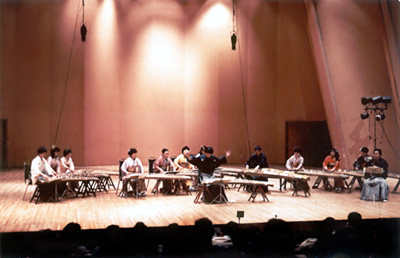 Shri Ram Centre for the Performing Arts or SRC was previously known as Shri Ram Centre for Arts and Culture. This is a cultural institution in New Delhi that originated in the Indian National Theatre. This came into existence in 1948. Enterprising and visionary ladies like Kamaladevi Chattopadhyaya, Nandita Kripalani, and Sheila Bharat Ram were behind it. This was built with the main aim of revitalizing Indian classical music, dance, and theatre, and traditional forms. Revival of national festivals was another important objective. The Diwali Mela organized by SRC for over four decades is a unique event in Delhi.
Shri Ram Centre for the Performing Arts or SRC was previously known as Shri Ram Centre for Arts and Culture. This is a cultural institution in New Delhi that originated in the Indian National Theatre. This came into existence in 1948. Enterprising and visionary ladies like Kamaladevi Chattopadhyaya, Nandita Kripalani, and Sheila Bharat Ram were behind it. This was built with the main aim of revitalizing Indian classical music, dance, and theatre, and traditional forms. Revival of national festivals was another important objective. The Diwali Mela organized by SRC for over four decades is a unique event in Delhi.
This cultural institution is situated in its own building in Mandi House i.e. the cultural heart of New Delhi. Shri Ram Centre for the Performing Arts has a well-equipped auditorium with 600 seats. The basement, where experimental theatre used to be staged, played an important role for many years in the growth of amateur theatre in the city. SRC holds acting courses regularly. It hosts workshops, including three on playwriting in 1986-89 that encouraged many new dramatists. The annual Shri Ram Memorial Lectures have seen personalities like Badal Sircar, Utpal Dutt, Vijay Tendulkar, Vijaya Mehta, Satyadev Dubey, and K. V. Subbanna delivering talks, later published by SRC. In 1981, under Rajinder Nath, SRC took up producing theatre itself by starting a repertory company, which goes on tour as well. Sutradhar Puppet, founded in 1980, is an integral part of SRC and has helped in popularizing puppetry.
This article is a stub. You can enrich by adding more information to it. Send your Write Up to content@indianetzone.com




















